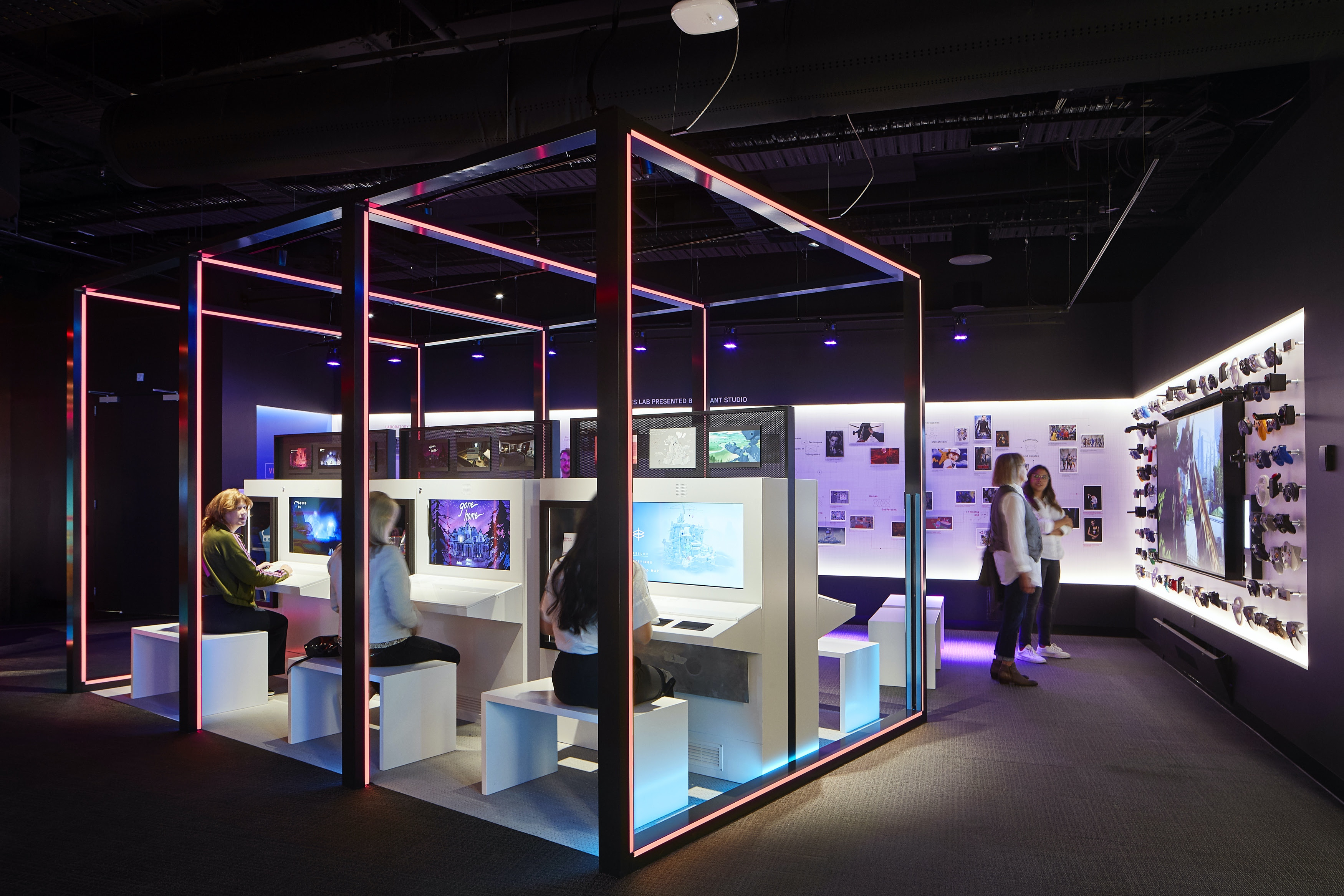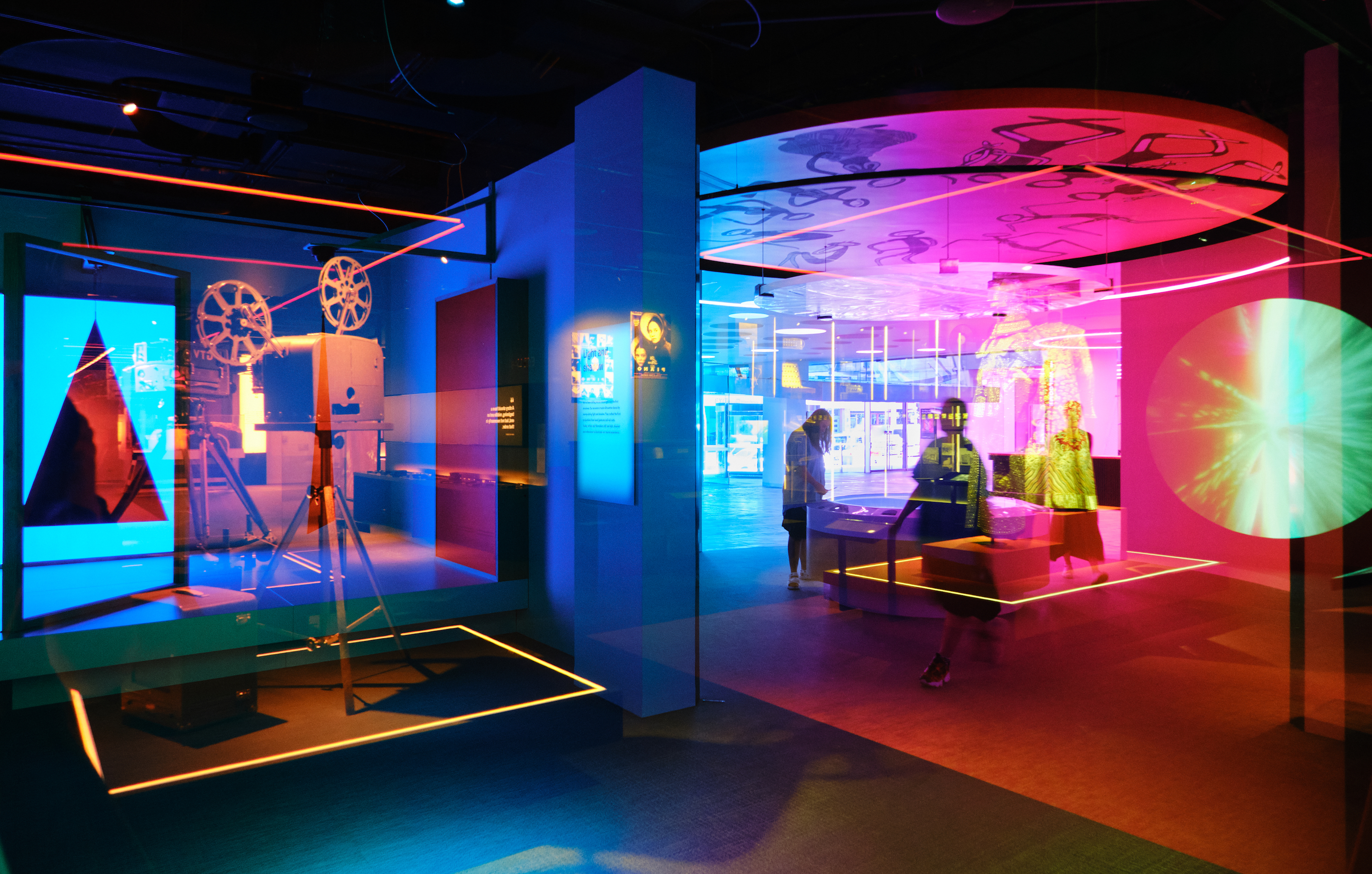A museum dedicated to the art of film, videogames, and digital culture, has got to have a killer AV system. Directors at ACMI, Australia’s national museum of screen culture located in Melbourne, recently finished an overhaul of the AV system in a critical exhibit to allow visitors to immerse themselves in a journey through Australia’s history of moving images.
“ACMI, formerly known as the Australian Centre for the Moving Image, celebrates the wonder and power of the world’s most democratic art form and fosters the next generation of makers, players, and watchers,” explained Chris Harris, director of exhibitions and touring at ACMI. “We consider ACMI the museum of ‘screen culture’ and look to navigate our shared universe of film, television, videogames, and art.”
By using robust, immersive, and interactive AV, the exhibition, titled The Story of the Moving Image, advances through time—from shadow play to the films that shaped Australia’s cinematic landscape. The exhibition includes Games Lab Presented by Big Ant Studios, where AAA titles sit alongside a curated selection of locally made indie games, and a section dedicated to the power of citizen journalism.
“We offer a number of interactive experiences that look at both the moving image and the AV that supports the moving image,” said Harris. “Our experience lets visitors animate shadows, craft optical toys, experiment with time, assemble film scenes, and create soundscapes. There is a ‘Lens’ that everyone receives upon entering that allows visitors to ‘collect’ everything they see on a visit, from objects and artworks to interactive experiences.”
While the museum is largely focused on the “image” component of its name, the need for thoughtfully placed audio throughout the space is critical—requiring hundreds of audio feeds across the gallery space. To accommodate that many audio signals, the ACMI designers relied on Audinate’s Dante.
[The Integration Guide to Dante-Enabled AV]
“Traditionally, the space has been known to be a bit cacophonous,” said Greg Turner, a consultant working with ACMI. “Because of that, we knew from the start it was going to be critical that we had tight control over all of our audio signals. With the redesign, we’ve installed hundreds of displays in the space, so how do we make sure we’re managing hundreds of audio signals as well? The obvious answer from the start was Dante.”
Using Dante instead of traditional networking also allowed the team to minimize electromagnetic interference, which is a significant factor at ACMI because the museum is located near a train line.
“ACMI has created a soundscape that requires localized sound as well as sound that exists as a background across the entire gallery space,” said Michael Cartmel, integrator at Lumicom and lead installer on the ACMI project. “When you consider all the endpoints in this system, it would be horrendous to try this without Dante. You’d have an impossible number of speaker cables and you’d be hard-pressed to pinpoint which cable was for what speaker.”

But with Dante, Cartmel said, the process was not only easier, but also more elegant. Each endpoint in the system is connected to the network and processed in a virtual matrix within QSC Q-SYS Core 510i processor. The Q-SYS Core OS Platform ingests Dante audio signals via a Software-based Dante license for Q-SYS without the need for additional pieces of hardware or I/O cards in the system.
“Once Dante is ingested, Q-SYS handles all DSP processing, routing/distribution for the all of the audio and control elements to the various endpoints across the system. Best of all, all of this is configured in a single software, Q-SYS Designer Software,” said Andy Pearce, senior director of sales, Southeast Asia Pacific, QSC.
Endpoints on the system are typically speakers—the museum uses Yamaha speakers and Dante-native amplifiers across the space—but often an input is added by way of a microphone or a localized piece of video. In those cases, where Dante isn’t natively integrated into an endpoint, the museum uses Dante AVIO adapters.
“The videogame consoles, for example, aren’t Dante-native,” Cartmel said, “but it’s no problem. We put AVIO adapters on them and quickly added audio on the network. It’s perfect.”
Cartmel said they used a similar approach in areas where individuals can craft their own soundscapes using inputs such as microphones, instruments, and music software. The system takes the input generated by the user and makes it Dante-native immediately with the AVIO adapters.
Most importantly, the museum is able to bring all these endpoints together in a streamlined system featuring customized sound in every location. This provides an immersive experience tailored precisely to the individual’s location in the museum or an exhibit they might be interacting with.
“A moving image, be it movie, television, videogame or other medium, is a very immersive experience. Adding AV technologies to the museum that support and enhance that experience is crucial,” concluded Harris. “Technologies such as Audinate’s Dante allow us to be creative with audio as well. We can manage hundreds of specific audio signals. We can also bring in audio signals from different types of devices—such as videogame consoles—and ensure they will dovetail with the overall experience.”
Click here to read more stories from the June 2021 issue of SCN.
